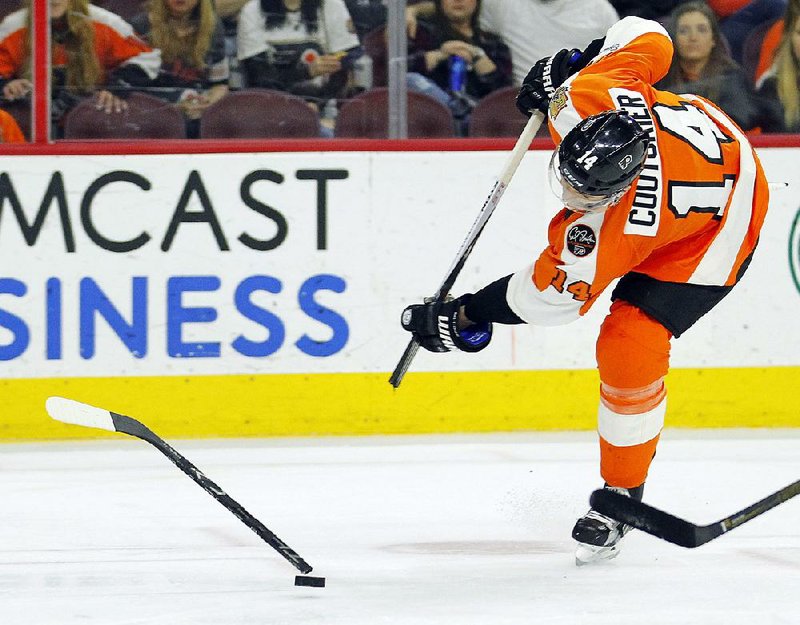Patrick Kane, whose stickhandling skills are well-known in NHL circles, spends time each summer testing out hockey sticks.
At a glance
THURSDAY'S GAME
Pittsburgh 6, Nashville 0
Pittsburgh leads series 3-2.
Sunday's game -- All times Central
Pittsburgh at Nashville, 7 p.m.
The Chicago Blackhawks superstar puts Bauer's latest creations in his hands to test how the flexibility, weight and shape suit him and his creative game.
"I love when you get a new batch of sticks that just feel right," Kane said. "I use a new stick every game. So, there's no better feeling going out for warmups and knowing the stick feels good, shots are going right where you want them, and stickhandling feels smooth and effortless."
Hockey sticks have come a long way over the years.
Brian Logie, a hockey historian, said hornbeam trees were the source of the first sticks, in part because they were abundant in Nova Scotia, Canada, and because the roots grew into the ground at an angle like the blade of a stick. They were later made from rock elm and white ash. As sticks evolved away from wood, laminates were incorporated and so were fiberglass-reinforced blades.
Hockey sticks are going to shatter. It happens.
They break despite technological advances that turn carbon fiber into virtual extensions of a hockey players hands. They are custom made for NHL players, crafted and finessed into a single piece.
Sometimes the breaks happen at the worst time.
"It's just kind of one of those 'Oh crap' moments," Pittsburgh Penguins forward Bryan Rust said. "Bad things happen, but you've got to just take it and move on."
During Game 4 of the Stanley Cup Final, Pittsburgh's Chris Kunitz had to move on and play without a stick in his hands against Nashville. The winger stood in the way of a shot from Predators defenseman Ryan Ellis and the puck sliced through Kunitz's stick.
A slash usually is what shatters a stick. One hack in the wrong place can snap a shaft in two.
Shots, too, can do damage as players do anything, especially in the playoffs, to stop or deflect a puck as Kunitz did. A skater without a stick while the other team has the puck is left relatively defenseless, needing to rely on his skates, gloves or body to impede a shot. The blade of a player's stick can get in the way of a puck inside the blue line and the stick may seem fine. Seconds later, though, he may find out that blocked shot was the beginning of the end for his critical piece of equipment, with bits and pieces soon all over the ice.
Earlier this postseason, that happened to Washington Capitals defenseman Kevin Shattenkirk.
"You get an opportunity to take a one-timer from inside the circle as a defenseman, you don't really get that opportunity so you kind of give everything you can, and it's just an unfortunate break," Shattenkirk said. "It's like a bad bounce. I remember when I missed it. I threw my stick down and started skating back because they almost hit a home run for a breakaway. It's one of those things now with the way sticks are made, they break easier. Guys shoot the pucks harder. They're stronger and it's something you have to deal with from time to time."
Manufacturers such as Bauer, CCM and Warrior compete against each other to have the best sticks in the world.
"I'd be lying if I said I don't notice, especially when a stick blows up and doesn't perform when a player has an opportunity to score or make a key play," Bauer brand manager Tyson Teplitsky said. "It hurts a little bit that they're frustrated with the stick in that moment in time and we obviously want our sticks to perform, but guys realize it is part of the game."
By the mid-1990s, composite blades were introduced and by the turn of the century, one-piece composite sticks become the go-to equipment for the world's best players and amateurs willing to pay hundreds of dollars for one. When NHL players choose not to use certain sticks they ordered or have moved onto another custom-made model, they are sold by teams to Pro Stock Hockey, an Illinois-based company that makes them available to the public.
Even when a player is loyal to a certain brand and has found a groove with stick specifications, he may go through a stick every game even if there doesn't appear to be anything wrong with it. NHL teams turn those lightly used sticks into sales, making them available for fans to buy at games at merchandise stands.
Penguins defenseman Ian Cole estimates he goes through between 50 and 70 sticks in a season and says he uses Warriors.
"Every brand is different. Every stick is different," he said. "Every batch is different, it seems like."
Sports on 06/10/2017
